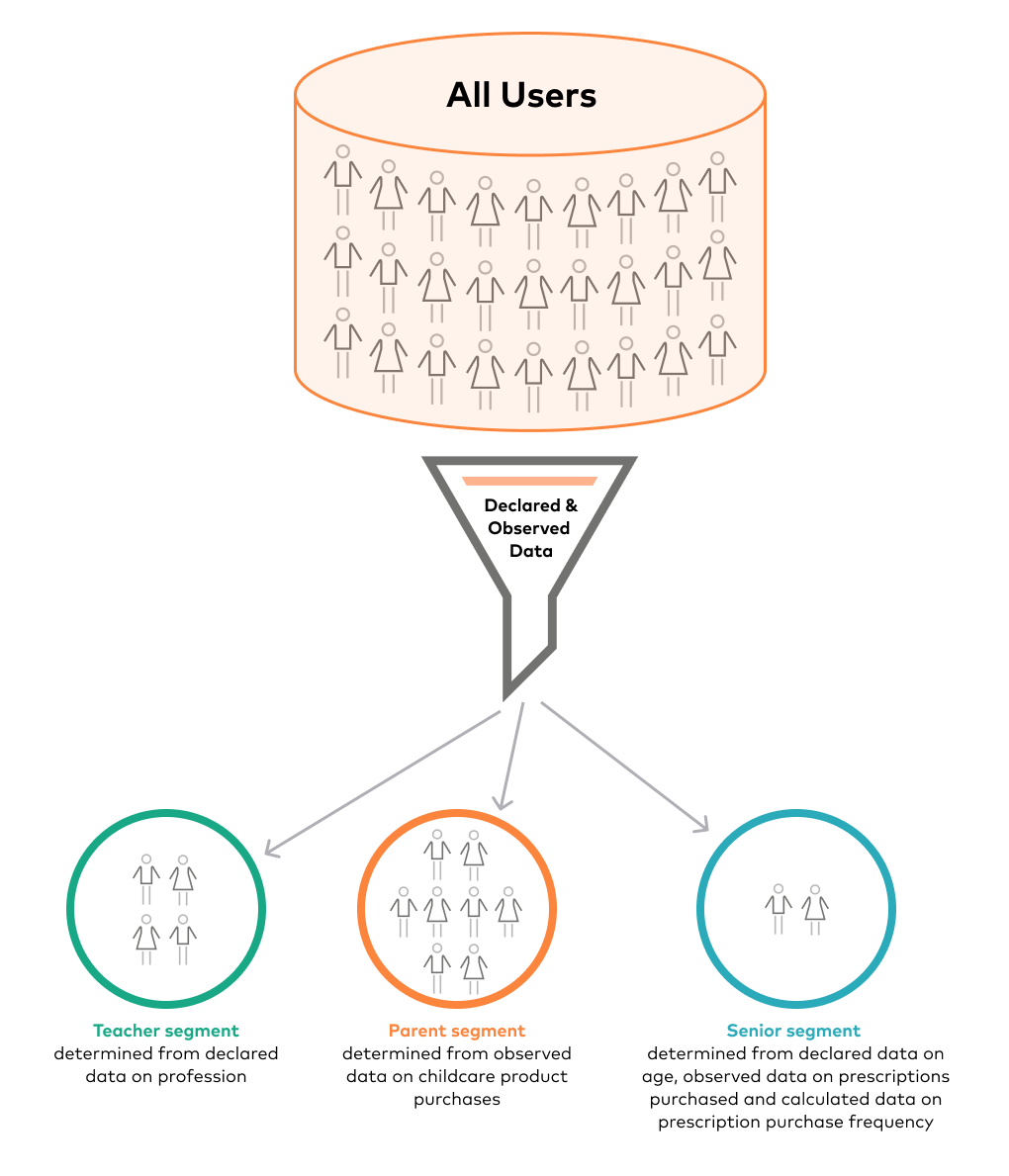How are member profiles related to an audience?
SessionM orchestrates member data from various sources, such as POS systems, ecommerce platforms, social media channels, marketing automation platforms, and customer call centers into a single member base that consists of comprehensive member profiles. Each profile is a powerful mechanism for understanding a member’s activities and preferences as they engage with a business. Over time, businesses can build collections of member profiles.
However, the value of these member records increases considerably when they can be organized into specific groupings, or audience segments. Once multiple members have been identified for a specific audience segment, the entire segment can be targeted for specific loyalty programs and campaigns.
The SessionM platform ensures that the data associated with huge numbers of separate member profiles can be analyzed and then distilled – or funneled – into actionable audience segments.
Consider the following diagram to better understand this principle:

As you review the variety of member profiles residing in the SessionM data cloud, you can identify shared traits among them. These traits can be combinations of three types of data:
-
Declared: When a member enters information on their own, either during account creation or when modifying their information.
-
Observed: When a member engages with your brand across engagement channels, such as a purchase, email open, or interaction with your mobile app, website or content - giving more granularity into who you could filter to include in segmentation.
-
Calculated: Values that are established through observing a member’s behavior. Calculated metrics include recency, frequency, and monetary spend as well as forward-looking projections such as customer lifetime value and propensity for churn.
In the diagram shown above, a set of members can be defined based on each of them having indicated that they are teachers. Another segment can be defined for parents who have purchased similar kinds of items online. A third group – seniors – is an audience segment defined by a combination of traits that derive from declared age data and observed historical data that pertains to prescription purchases.